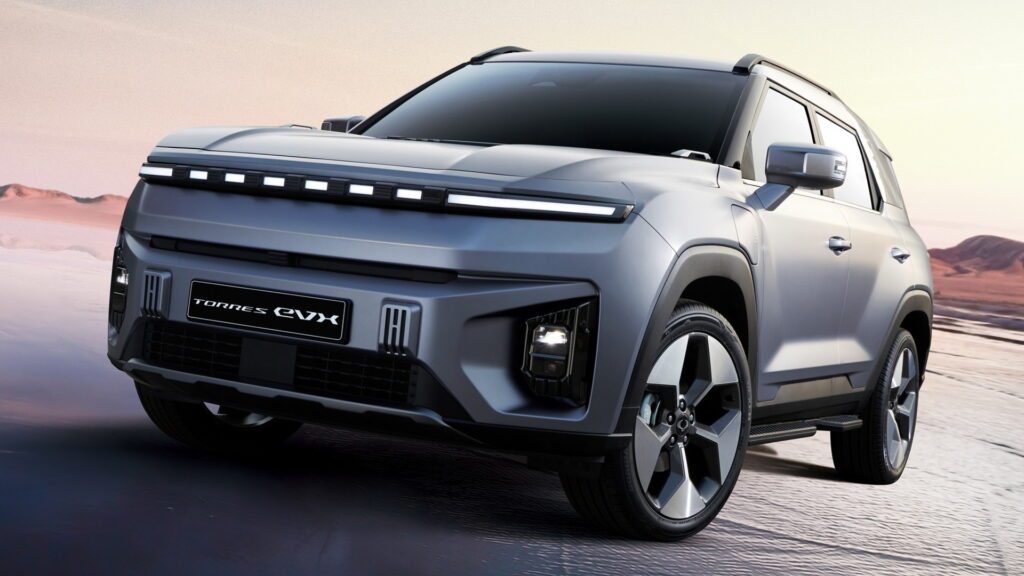KG Mobility, the Korean automaker that emerged from SsangYong, has taken to the floor of the Seoul Mobility Show to present three new all-electric concepts. Along with the previously revealed Torres EVX, it is displaying off the O100 pickup, the KR10 mid-size SUV, and the futuristic F100 SUV.
The concepts were produced to communicate KG Mobility’s mission statement to the world. Building from the ashes of the once bankrupt SsangYong, the new vehicles represent the company’s vision for the segments it wants to compete in, and the designs that will help it stand out.
The most avant-garde of the three concepts is the F100. Its grille is made up entirely of LED lights that can be customized to reflect the owner’s mood or personality. Looking further back, though, the vehicle’s silhouette is less futuristic, and, in fact, is highly reminiscent of the Toyota FJ Cruiser.
More: SsangYong Shows New Torres EVX Midsize Electric Crossover
Elsewhere, the O100 is described by KG Mobility as a mid-size pickup for urban drivers. Its design is inspired by the Torres EVX, as you can see from the light signature at the front. The electric concept is envisioned as having V2L connectors to help future owners power their tools on the work site, or their cooler on the beach.
The KR10, meanwhile, should look a little more familiar to Korean customers, as it is envisioned as a followup for the SsangYong Korando. The vehicle is now pushing 40 and KG Mobility claims it is the leading SUV in Korea.
Finally, KG Mobility showed the Torres EVX, which is a little larger than the KR10. Unveiled earlier this month, the automaker revealed that the model will get around 310 miles (500 km) of range thanks to lithium iron phosphate batteries from China’s BYD that are intended to be resistant to external shocks, and less prone to fires. The Torres is expected to go on sale this fall, with a starting price of around 30 million won ($23,116 USD at current exchange rates), according to The Korean Herald.

The company also showed off a new EV platform that is equipped with motors at the front and rear, which means that it can deliver two or four-wheel-drive, depending on the circumstances. It is expected to underpin vehicles starting in 2026, reports Hankyung.com.











